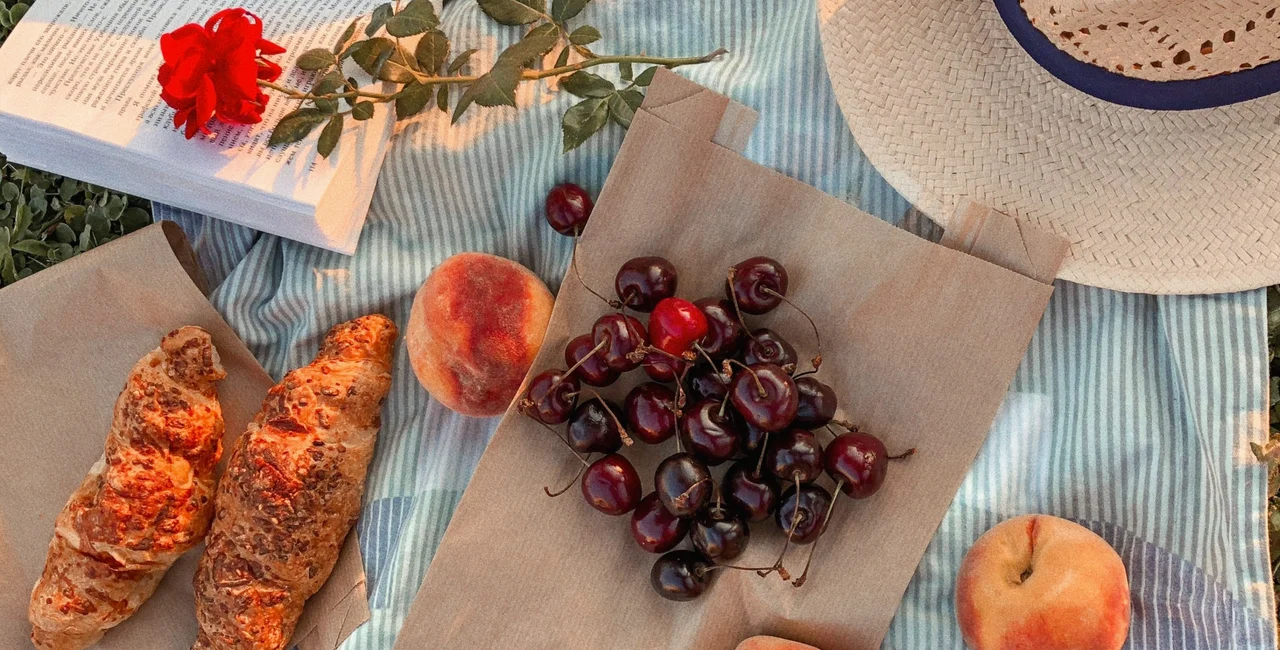This article is an update of a 2013 article.
Thanks to cold storage and imports, most fruits are available to consumers throughout the year. But store-bought varieties are only half the story in the Czech lands. In summer and early autumn, trees and bushes in forests, orchards, and gardens come alive with seasonal fruit.
PARTNER ARTICLE
A berry Czech summer
Did you know that the red of strawberries, raspberries, and redcurrants give two summer months, červen (June) and červenec (July) their name? (Červený is Czech for red.) Fresh berries can be bought from around March to September thanks to imports. But the window of opportunity for garden-fresh is quite small. One terrific use for your bumper crop of berries is in a Czech cake called bublanina or “bubble cake”. Czechs commonly make a cherry version of this summer delight, but a mixed berry bublanina is also delicious.
Strawberries (jahody) appear in June. Locally grown fruit tends to be softer, sweeter, and juicier than the earlier, out-of-season imports. If you want to get back to nature with your strawberries, you can always pick your own. For those who love hiking, be on the lookout for the much smaller wild cousin of the strawberry, the woodland strawberry, known as měsíční jahody in Czech. Depending on your inclination, you can translate it quite drably as “monthly strawberry” or a little more poetically as “moon strawberry”. About the size of a pea, the woodland strawberries have much more intense flavor.
Raspberries (maliny) come next. A search in the forest from July to September will uncover clumps of these quite straggly bushes. Wild fruits tend to be smaller than the shop varieties with a sharp, tart taste. A word of warning: The larvae of various insects are fond of raspberries too, so check them before popping them in your mouth.
Stone fruit: Summer in hand
A typical Czech garden isn’t complete without some type of stone fruit tree. Stone fruits, especially plums, are frequently used to make fruit dumplings which freeze well and allow you to enjoy the season’s best bounty well beyond summer.
Cherry (třešeň) is the first of these trees to bear fruit. For a couple of weeks in summer, this fruit is plentiful. If any of your colleagues have cherry trees in their garden, be prepared to see them in the office around the end of June and beginning of July then nothing for another year. The sour morello variety (víšeň) follow on soon after. These more tart relatives of the ordinary cherry can be almost black and are a perfect filling for strudel as a change from apples.
Peaches (broskve) and apricots (meruňky) ripen at the end of the summer. Czech apricots tend to be smaller and can be a bit sour when in the shops, so give them time to soften and sweeten. Peaches can grow to quite decent sizes and eating one straight from a tree is one of life’s singular pleasures. Sadly, the wasp has a sweet-tooth and many will bore into the fruits.
Plum (švestka) is my Czech fruit of choice. It is the basis of povidla, a traditional fruit spread some people still make at home, and is used in fruit dumplings, baked into koláč, and distilled into slivovice. Czech plums are smaller and oval-shaped with yellow flesh and tend to appear in early autumn. The larger variety of plums are known as blumy. A smaller popular cultivar which is particularly sweet are greengages (ryngle), which have a late-season, too.
Savor the flavor…for later
About this time of year, you’ll see canning supplies prominently displayed at most grocery stores. Traditionally Czechs put up jars of stone fruits and berries for use throughout the year. Common fruit preserving techniques include kompot where fruit is preserved with citric acid (kyselina citronová) and, of course, marmalade (marmalada). You will find jam sugar with pectin (želírovací cukr) and other supplies in the supermarket baking aisle or even the drugstore.
See a guide to Prague orchards here.












 Reading time: 3 minutes
Reading time: 3 minutes 
























